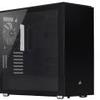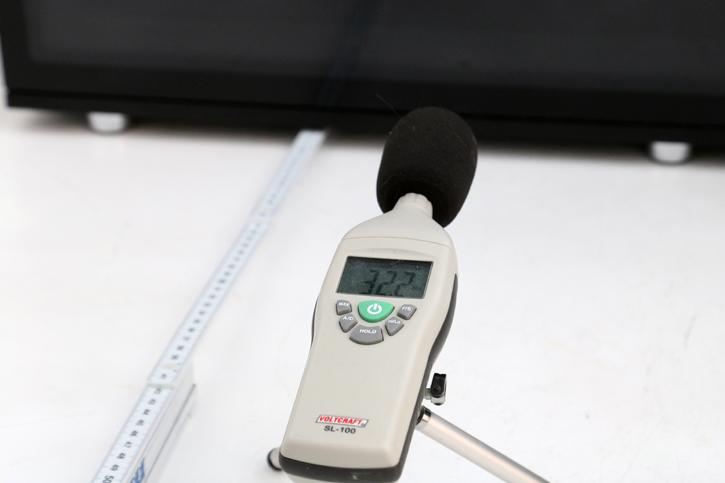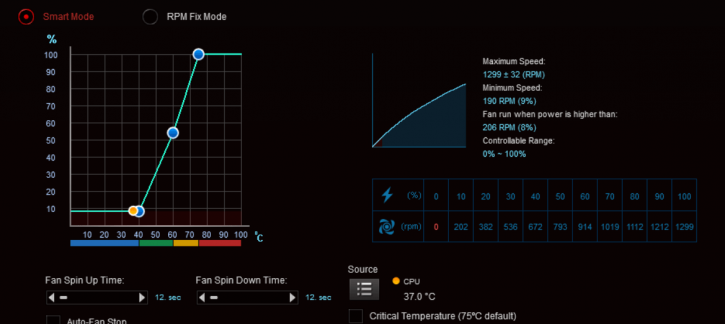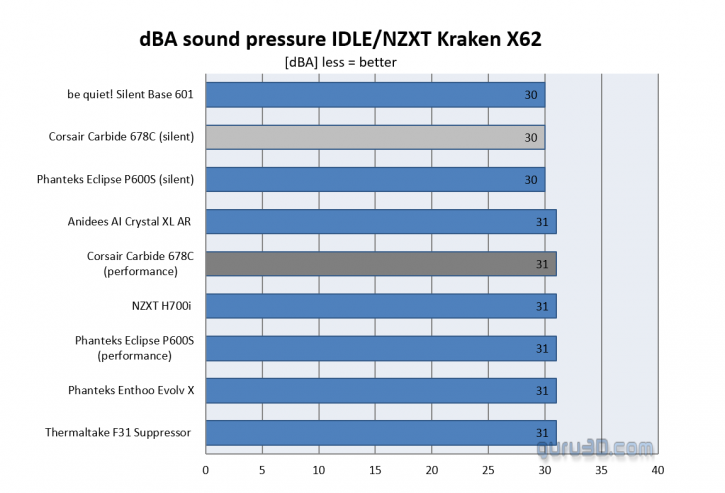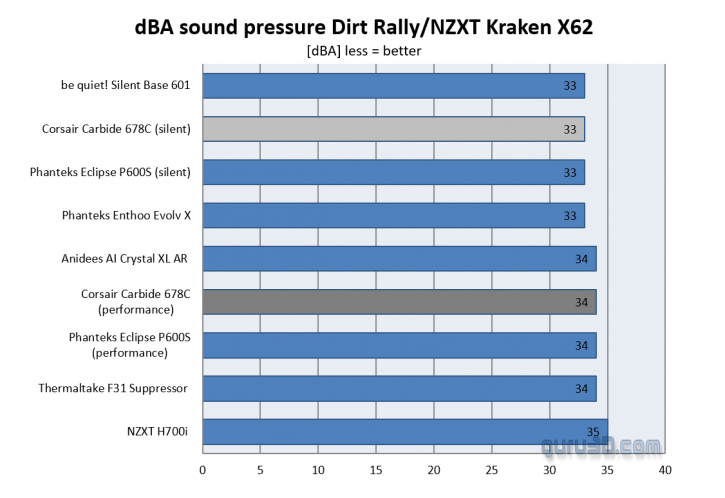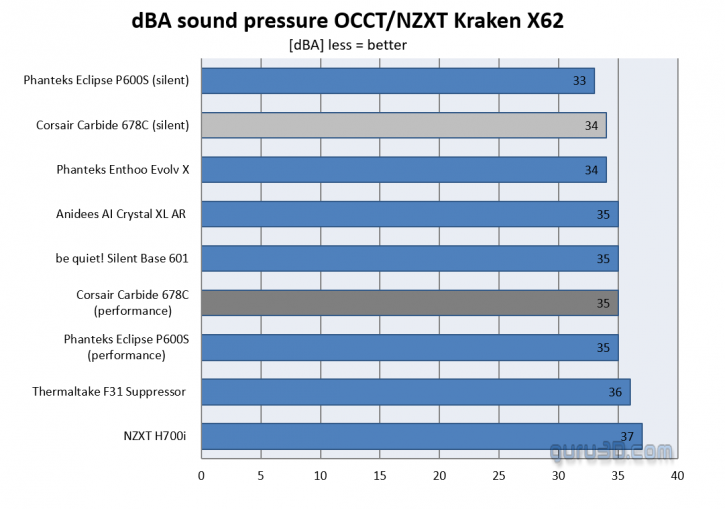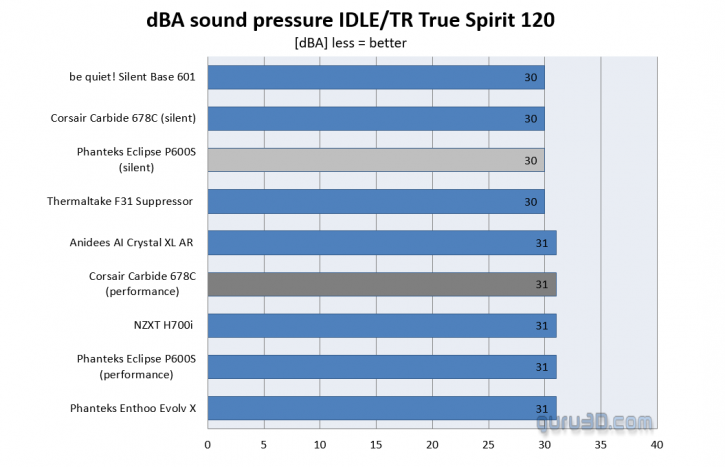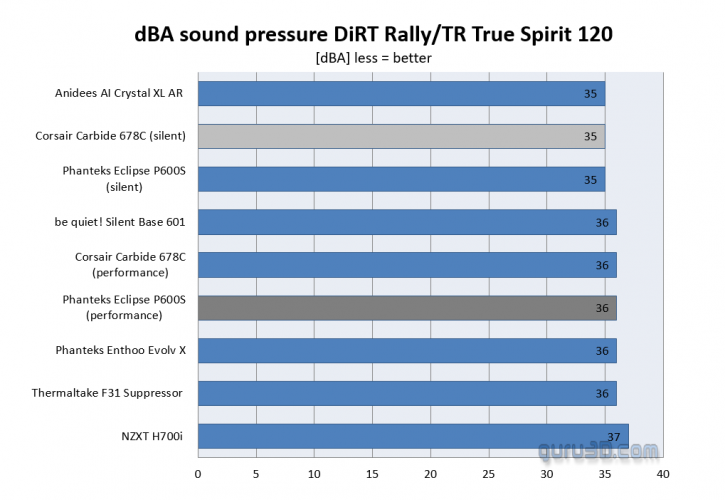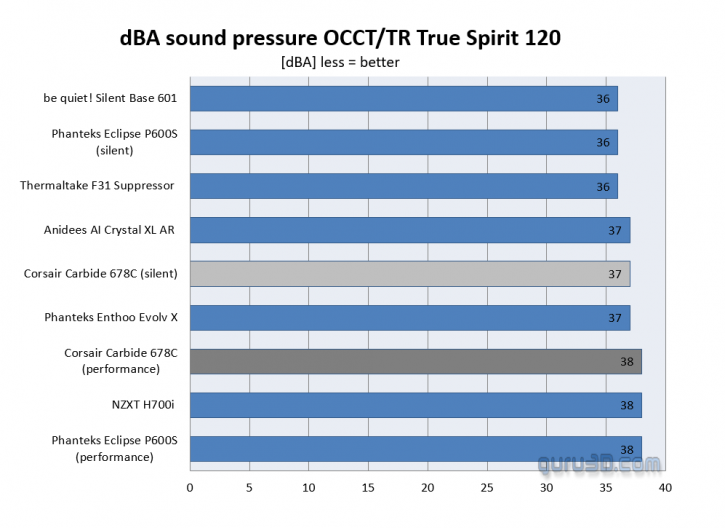Acoustic and thermal performance
Acoustic performance - Fans Noise Levels
Processors and graphics cards can produce a lot of heat, that heat needs to be transported away from the hot core as fast as possible. Often you'll see massive active fan solutions that can indeed get rid of the heat, yet all the fans these days make the PC a noisy son of a gun. Do remember that the test we do is extremely subjective. We bought a certified dBA meter and will measure how many dBA originate from the PC. Why is this subjective you ask? Well, there is always noise in the background, from the streets, from the HDD, PSU fan, etc., so this is, by a mile or two, an imprecise measurement. You could only achieve objective measurement in a sound test chamber.
The human hearing system has different sensitivities at different frequencies. This means that the perception of noise is not at all equal at every frequency. Noise with significant measured levels (in dB) at high or low frequencies will not be as annoying as it would be when its energy is concentrated in the middle frequencies. In other words, the measured noise levels in dB will not reflect the actual human perception of the loudness of the noise. That's why we measure the dBA level. A specific circuit is added to the sound level meter to correct its reading in regard to this concept. This reading is the noise level in dBA. The letter A is added to indicate the correction that was made in the measurement. Frequencies below 1 kHz and above 6 kHz are attenuated, whereas frequencies between 1 kHz and 6 kHz are amplified by the A weighting.
There are a lot of differences in measurements among websites. We measure noise levels in a completely enclosed and closed room. The lowest dBA level we can measure without any equipment activated is roughly 30 dBA in this room. We measure the noise 30 to 40cm from the side panel.
The components:
- Intel Core i7 8700K de-lidded @ 4.8 GHz @1.30 V
- Asus ROG Strix Z390-E Gaming
- AORUS Waterforce GeForce® GTX 1080 Ti Xtreme Edition 11G
- Samsung Evo 970 1 TB
- OCZ RD400 512 GB
- Seasonic Prime Titanium Ultra 850 W
- Thermalright True Spirit 120 Direct for AC
- NZXT Kraken X62 for LC (placed at the front)
The temperatures were recorded during OCCT testing and in DiRT Rally, with the highest settings, and at 2560 x 1440. Each of the 3 measurements lasted 30 minutes. Noise was measured using a Voltcraft SL-100, at 30 cm from the side panel, in idle and during stress tests. The NZXT Kraken X62 that we used has two be quiet! Silent Wings 3 140mm fans on it. The Thermalright True Spirit 120 Direct is entirely stock. The measurements were taken with a closed chassis. This is close to a real-life scenario, making it a bit noisier than an open environment. This is the nature of airflow bumping into and hitting the innards of the chassis.
One remark – similar to the Phanteks P600s review, you’ll find two readings here as well: with the top cover on (silent) and without it (performance).The three standard 140mm fans have a useful RPM range between 200 and 1300 rpm (compared to the 400-1200 rpm that Corsair states) with Asus Fan Xpert 4.
Acoustic performance - Fans Noise Levels
Measurements for LCS:
Measurements for air cooling:
